66 have author last names that start with P have author last names that start with P

Opinion polls dominate media coverage of politics, especially elections. But how do the polls work? How do we tell the good from the bad? And in light of recent polling disasters, can we trust them at all?
Polling UnPacked gives us the full story, from the first rudimentary polls in the nineteenth century, through attempts by politicians to ban polling in the twentieth century, to the very latest techniques and controversies from the last few years. Equal parts enlightening and hilarious, the book requires no prior knowledge of polling or statistics to understand. But even hardened pollsters will find much to enjoy, from how polling has been used to help plan military invasions to why an exhausted interviewer was accidentally instrumental in inventing exit polls.
Written by a former political pollster and the creator of Britain’s foremost polling-intention database, Polling UnPacked reveals which opinion polls to trust, which to ignore, and which, frankly, to laugh at. It will change the way we see political coverage forever.
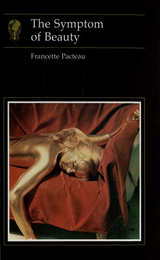
Less interested in the contingent object of desire than the fantasy that frames it, Pacteau considers the staging of the aesthetic emotion. Her analysis extends from the Classical ideals of beauty, through Renaissance poetry to the recent formulations of Hollywood. Her book is an ambitious attempt to describe the mise-en-scène of beauty within a particular field of representations – that of the beauty of a woman.

Double-decker buses, bowler hats, and cricket may be synonymous with British culture, but when it comes to their cuisine, nothing comes to mind faster than fish and chips. Sprinkled with salt and vinegar and often accompanied by mushy peas, fish and chips were the original British fast food. In this innovative book, Panikos Panayi unwraps the history of Britain’s most popular takeout, relating a story that brings up complicated issues of class, identity, and development.
Investigating the origins of eating fish and potatoes in Britain, Panayi describes the birth of the meal itself, telling how fried fish was first introduced and sold by immigrant Jews before it spread to the British working classes in the early nineteenth century. He then moves on to the technological and economic advances that led to its mass consumption and explores the height of fish and chips’ popularity in the first half of the twentieth century and how it has remained a favorite today, despite the arrival of new contenders for the title of Britain’s national dish. Revealing its wider ethnic affiliations within the country, he examines how migrant communities such as Italians came to dominate the fish and chip trade in the twentieth century.
Brimming with facts, anecdotes, and images of historical and modern examples of this batter-dipped meal, Fish and Chips will appeal to all foodies who love this quintessentially British dish.
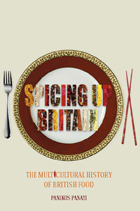
From the arrival of Italian ice-cream vendors and German pork butchers, to the rise of Indian curry as the national dish, Spicing Up Britain uncovers the fascinating history of British food over the last 150 years. Panikos Panayi shows how a combination of immigration, increased wealth, and globalization have transformed the eating habits of the English from a culture of stereotypically bland food to a flavorful, international cuisine.
Along the way, Panayi challenges preconceptions about British identity, and raises questions about multiculturalism and the extent to which other cultures have entered British society through the portal of food. He argues that Britain has become a country of vast ethnic diversity, in which people of different backgrounds—but still British—are united by their readiness to sample a wide variety of foods produced by other ethnic groups. Taking in changes to home cooking, restaurants, grocery shops, delis, and cookbooks, Panayi’s flavorful account will appeal to a wide range of readers interested in ethnic cooking, food history, and the social history of Britain.
“Wearing his twin hats of foodie and social historian, Panikos Paniyi can appall as well as engender salivation on his tour d’horizon of the multicultural history of British food. His book demonstrates convincingly that whether drawing on its former colonial and imperial possessions . . . or on its European neighbors, the openness of British society has truly enriched its diet and produced its present-day variegated cuisine.”—Washington Times

Fabio Parasecoli discovers that for centuries, southern Mediterranean countries such as Italy fought against food scarcity, wars, invasions, and an unfavorable agricultural environment. Lacking in meat and dairy, Italy developed foodways that depended on grains, legumes, and vegetables until a stronger economy in the late 1950s allowed the majority of Italians to afford a more diverse diet. Parasecoli elucidates how the last half century has seen new packaging, conservation techniques, industrial mass production, and more sophisticated systems of transportation and distribution, bringing about profound changes in how the country’s population thought about food. He also reveals that much of Italy’s culinary reputation hinged on the world’s discovery of it as a healthy eating model, which has led to the prevalence of high-end Italian restaurants in major cities around the globe.
Including historical recipes for delicious Italian dishes to enjoy alongside a glass of crisp Chianti, Al Dente is a fascinating survey of this country’s cuisine that sheds new light on why we should always leave the gun and take the cannoli.
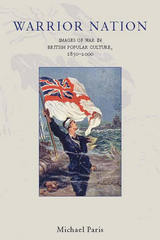

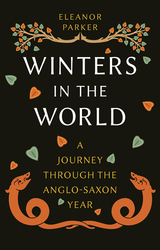
Winters in the World is a beautifully observed journey through the cycle of the year in Anglo-Saxon England, exploring the festivals, customs, and traditions linked to the different seasons. Drawing on a wide variety of source material, including poetry, histories, and religious literature, Eleanor Parker investigates how Anglo-Saxons felt about the annual passing of the seasons and the profound relationship they saw between human life and the rhythms of nature. Many of the festivals celebrated in the United Kingdom today have their roots in the Anglo-Saxon period, and this book traces their surprising history while unearthing traditions now long forgotten. It celebrates some of the finest treasures of medieval literature and provides an imaginative connection to the Anglo-Saxon world.

Traveling from Persepolis to Constantinople, Saint Petersburg to Beijing and Delhi, Parker considers how these structures and monuments were brought together to make the most powerful statement and how that power was wielded to the greatest advantage. He examines imperial leaders, their architects, and their engineers to create a new understanding of the relationship among buildings, design, and power. He concludes with a look at the changing nature of power in the late twentieth and twenty-first centuries and the way this is reflected symbolically in contemporary buildings and urban plans. With illuminating images, Power in Stone is a fascinating history of some of the world’s most intriguing cities, past and present.
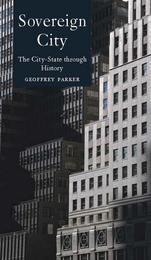
Sovereign City is a wide-ranging and vigorous examination that seeks to understand the role of the city-state from the birth of Western civilization through its re-emergence at the dawn of the twenty-first century in the Far East and Islamic world.

During the first and second millennia BCE a swathe of nomadic peoples migrated outward from Central Asia into the Eurasian periphery. One group of these people would find themselves encamped in an unpromising, arid region just south of the Caspian Sea. From these modest and uncertain beginnings, they would go on to form one of the most powerful empires in history: the Persian Empire. In this book, Geoffrey and Brenda Parker tell the captivating story of this ancient civilization and its enduring legacy to the world.
The authors examine the unique features of Persian life and trace their influence throughout the centuries. They examine the environmental difficulties the early Persians encountered and how, in overcoming them, they were able to develop a unique culture that would culminate in the massive, first empire, the Achaemenid Empire. Extending their influence into the maritime west, they fought the Greeks for mastery of the eastern Mediterranean—one of the most significant geopolitical contests of the ancient world. And the authors paint vivid portraits of Persian cities and their spectacular achievements: intricate and far-reaching roadways, an astonishing irrigation system that created desert paradises, and, above all, an extraordinary reflection of the diverse peoples that inhabited them.

In Aircraft, David Pascoe follows this lead and offers a startling new account of the form of the airplane, an object that, in the course of a hundred years, has developed from a flimsy contraption of wood, wire and canvas into a machine compounded of exotic materials whose wings can touch the edges of space.
Tracing the airplane through the twentieth century, he considers the subject from a number of perspectives: as an inspiration for artists, architects and politicians; as a miracle of engineering; as a product of industrialized culture; as a device of military ambition; and, finally, in its clearness of function, as an instance of sublime technology.
Profusely illustrated and authoritatively written, Aircraft offers not just a fresh account of aeronautical design, documenting, in particular, the forms of earlier flying machines and the dependence of later projects upon them, but also provides a cultural history of an object whose very shape contains the dreams and nightmares of the modern age.

At the hub of this exclusive enclave, which rises from the runway to an altitude of several thousand feet and which calmly accommodates the dangers of take-off and landing procedures, lies the airport – the concrete manifestation of airspace. The airport is a locale of anxiety and chance where, in order to expedite air traffic, authority is absolute, time is relative and liberties are always taken.
David Pascoe's wide-ranging book blends personal observation with detailed discussions of social history, air accidents, landscape, architecture, politics, aesthetics, literature and film to provide a striking account of the airport as a unique space and singular form of modernity, a place fundamental to any accurate sense of what we are now, and where we are going.
"eclectic and intelligent ... a thought-provoking analysis"—Financial Times
"the scope of Mr Pascoe’s rumination is impressive"—The Economist
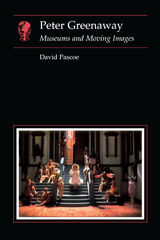
"[Pascoe] tirelessly explicates the numerology and mytho-mania that are the film-maker's organising principles"—The Guardian
"A supremely intelligent, utterly tuned-in, definitive exploration of the ultimate British auteur's back catalogue, helpfully illustrated at every opportunity. . . illuminating"—Empire

Composing songs of love and war in medieval Western and Southern Europe, troubadours spanned the social spectrum from powerful nobles to penniless minstrels. This book delves into the everyday worlds of these remarkable poet-musicians, famed for their innovative use of language and music as well as the lasting impact of their work on audiences then and now. The troubadours’ songs explored ideas about courtly love as well as medieval perceptions of gender, class, war, and chivalry. Linda M. Paterson examines the troubadours’ music, performance, and legacy, pairing fresh translations with the original texts to highlight the enduring beauty of their songs and poetry.

"Brilliant and beautifully written"—Jonathan Glancey, The Architects' Journal

Libertine London investigates the sex lives of women throughout the period 1680 to 1830, known as the long eighteenth century. The book uncovers the various experiences of women, whether as mistresses, adultresses, or as participants in the sex trade. From renowned courtesans to downtrodden streetwalkers, it examines the multifaceted lives of these women within brothels, on stage, and even behind bars. Based on new research in court transcripts, asylum records, magazines, pamphlets, satires, songs, theater plays, and erotica, Libertine London reveals the gruesome treatment of women who were sexually active outside of marriage. Julie Peakman looks at sex from women’s points of view, undercutting the traditional image of the bawdy eighteenth century to expose a more sordid side, which often left women distressed, ostracized, and vilified for their sexual behavior.
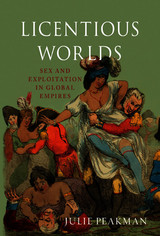
The book describes women in Turkish harems, Mughal zenanas, and Japanese geisha houses, as well as in royal palaces and private households and onboard ships. Their stories are drawn from many sources—from captains’ logs, missionary reports, and cannibals’ memoirs to travelers’ letters, traders’ accounts, and reports on prostitutes. From debauched clerics and hog-buggering Pilgrims to sexually-confused cannibals and sodomizing samurai, Licentious Worlds takes history into its darkest corners.
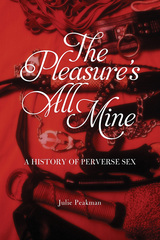
Delving into the specialized cultures of pain, necrophilia, and bestiality and the social world of plushies, furries, and life-size sex dolls, Peakman considers the changing attitudes toward these, as well as masturbation, “golden showers,” sadomasochism, homosexuals, transvestites, and transsexuals. She follows the history of each behavior through its original reception to its interpretation by sexologists and how it is viewed today, showing how previously acceptable behaviors now provoke social outrage, or vice versa. In addition, she questions why people have been and remain intolerant of other people’s sexual preferences.
The first comprehensive history of sexual perversion and packed with both color and black and white images, The Pleasure’s All Mine is a fascinating and sometimes shocking look at the evolution of our views on sex.

One of the most brilliant and original authors and architects of the entire Renaissance, Leon Battista Alberti had an output encompassing engineering, surveying, cryptography, poetry, humor, political commentary, and more. He employed irony, satire, and playful allusion in his written works, and developed a sophisticated approach to architecture that combined the ancient and modern. Born into the Florentine elite, Alberti was nonetheless disadvantaged due to exile and illegitimacy. As a result, he became an acute analyst of the social institutions of his time, as well as a profoundly existential writer who was intensely preoccupied with the human condition.
This new account explores Alberti’s life and works, examining how his personal and intellectual preoccupations continually pushed him to engage with an ever-broader spectrum of Renaissance culture.

Pearson describes the rise of Berlin from a small settlement surrounded by bog to one of the crucial economic and political centers of Europe. Berlin is a palimpsest of a cutting edge and dynamic modern culture over a troubled history, one that is visible in bombsites, museums, late-night clubs, and even a lake that allegedly hosts a man-eating monster. He ultimately shows how the city is imbued with an array of unnerving elements: emptiness, provincialism, ramshackle industrial eclecticism, lurid and lascivious counter-cultural expressions, and a tremendous history of violence—but also that these are precisely the sorts of things that give the city its unique charge. Posing one thought-provoking question after another, Pearson walks the city’s neighborhoods, peeling back layer upon layer of history in order to reveal a Berlin that few of us know.
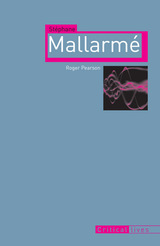
This concise biography of Stéphane Mallarmé (1842–98) blends an account of the poet’s life with a detailed analysis of his evolving poetic theory and practice. “A poet on this earth must be uniquely a poet,” he declared at the age of twenty-two—but what is a poet’s life and what isa poet’s function? In his poems and prose statements and by the example of his life, Mallarmé provided answers to these questions.
In Stéphane Mallarmé, Roger Pearson explores the relationship among Mallarmé’s life, his philosophy, and his writing. To Mallarmé, being a poet consists of a continuous, lifelong investigation of language and its expressive potential. It represents, argues Pearson, a fundamental response to the metaphysical mystery of the human condition and the desire to make sense of it for others. A poet turns everyday banality into prospects of mystery; and a poet, in Mallarmé’s conception, is able to bring all human beings together in heightened awareness and understanding of the “magnificent act of living.”
This concise and engaging biography tells the story of a fascinating and utterly unique voice in French poetry, one that was often overshadowed by other Symbolist writers. It is an essential read for students of literature and nineteenth-century France.

Peavitt takes us to the early closets, cabinets, and boxes into which we first started packing ice and the various things we were trying to keep cool. From there she charts the development of mechanical and chemical technologies that have led to modern-day refrigeration on both industrial and domestic scales, showing how these technologies have created a completely new method of preserving and transporting perishable goods, having a profound impact on society from the nineteenth century and on. She explores the ways the marketing of refrigerators have expressed and influenced our notions of domestic life, and she looks at how refrigeration has altered the agriculture and food industries as well as our own appetites.
Strikingly illustrated, this book offers an informative and entertaining history of an object that has radically changed—in a little over one hundred years—one of the most important things we do: eat.

Tourist brochures and travel guides depict Thailand as an exotic country with a rich cultural heritage, strong religious traditions, and a popular monarchy. Historians also contribute to Thailand’s international allure with chronicles of its unique historical and cultural continuity in comparison to the other southeast Asian countries, whose histories are stained by colonialism and nationalist struggles for independence.
Thailand challenges these stereotypes with a reinterpretation as well as an introduction to the emergence of Thailand as a nation-state. The book argues that the development of Thai nationhood was a long-term process shaped by interactions with the outside world, its pursuit of civilization, and, more recently, globalization. Maurizio Peleggi’s original account investigates, among other issues, the evolution of the geographical and linguistic landscapes, changes in class and gender relations, the role of institutions and ideologies, modern cultural expressions, social memory, and the conception of the Thai national self as contrasted against the racial and cultural Others of Burmese, Chinese and Westerners.
Thailandis a concise and compelling introduction to the complexities that lie behind Thailand’s exotic facade.
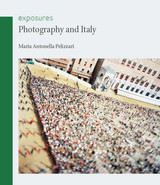
In this beautifully illustrated book Maria Antonella Pelizzari traces the history of photography in Italy from its beginnings to the present as she guides us through the history of Italy and its ancient sites and Renaissance landmarks.
Pelizzari specifically considers the role of photography in the formation of Italian national identity during times of political struggle, such as the lead up to Unification in 1860, and later in the nationalist wars of Mussolini’s regime. While many Italians and foreigners— such as Fratelli Alinari or Carlo Ponti, John Ruskin or Kit Talbot—focused their lenses on architectural masterpieces, others documented the changing times and political heroes, creating icons of figures such as Garibaldi and the brigands. Pelizzari’s exploration of Italian visual traditions also includes the photographic collages of Bruno Munari, the neorealist work of photographers such as Franco Pinna, the bold stylized compositions of Mario Giacomelli, and the controversial images created by Oliviero Toscani for Benetton advertising in the 1980s.
Featuring unpublished works and a rare selection of over one hundred images, this book will appeal to art collectors and students of art history and Italian culture.


So-called extinct objects are those that were imagined but were never in use, or that existed but are now unused—superseded, unfashionable, or simply forgotten. Extinct gathers together an exceptional range of artists, curators, architects, critics, and academics, including Hal Foster, Barry Bergdoll, Deyan Sudjic, Tacita Dean, Emily Orr, Richard Wentworth, and many more. In eighty-five essays, contributors nominate “extinct” objects and address them in a series of short, vivid, sometimes personal accounts, speaking not only of obsolete technologies, but of other ways of thinking, making, and interacting with the world. Extinct is filled with curious, half-remembered objects, each one evoking a future that never came to pass. It is also a visual treat, full of interest and delight.

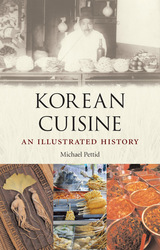
Over the last twelve centuries, Korean food dishes and their complex preparations have evolved along with the larger cultural and political upheaval experienced by the nation. Pettid charts this historical development of the cuisine, exploring the ways that regional distinctions and historical transformations played out in the Korean diet—including the effects of wartime food shortages and preparation techniques. Underlying all these dishes are complicated philosophical and aesthetic considerations, and Pettid delves into their impact on everything from the rituals associated with group meals or drinks with friends to the strict rules governing combinations of dishes and ingredients according to temperature, texture, spices, color, and consistency.
Featuring a batch of mouthwatering recipes and over a hundred vivid photographs of a striking array of dishes, Korean Cuisine is an incisive and engaging investigation into the relationship between Korean culture and food that will spice up the bookshelves of foodies and scholars alike.
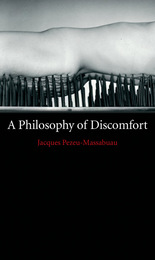
A hard chair. An embarrassing conversation. A mosquito bite. All these provoke in us a sense of discomfort, whether an irksome sensation or an experience of unpleasantness. While we normally define “discomfort” simply as a lack of comfort, it is unclear which came first—comfort or the lack of it.

Michelle Phillipov considers the changing fates and fortunes of fats across time and around the globe. From their past associations with prestige and social authority to their links to fast food and overindulgence in modern times, she explores the different meanings, debates, and controversies that have surrounded this staple food, which has been both an invaluable source of nutrition and the bane of public health concerns. She also looks to its current renaissance in media and popular culture and the renewed appreciation it enjoys as an important part of traditional foodways that stretch back all the way to prehistoric times, when the Paleo diet was even more popular than it is today. Dripping with recipes from around the world, Fats reveals and celebrates that one ingredient that makes everything taste better.
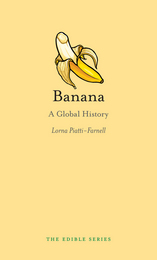
Beginning with the banana’s origins in New Guinea, Lorna Piatti-Farnell follows its pathways to South East Asia, Africa, the Caribbean, and the Americas, binding together a millennium of history into one digestible bunch. Focusing especially on the banana’s recent past, she shows how it rose from a regional staple to a global commodity, on par with coffee and sugar. She examines the ways it has been advertised, sold, and incorporated into popular culture, moving from nineteenth-century medical manuals to cookbooks, songs, slapstick comedy, and problematic figures like Miss Chiquita. Wide-ranging but pocket-sized, Banana is a culinary and cultural account of a peculiar little fruit that is at once the icon of exoticism and one of the most familiar foods we eat.
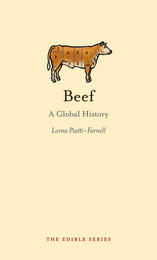

Highlighting the importance of Jarmusch’s treatment of sound, Piazza investigates how the director’s distinctive reputation consolidated itself over the course of a thirty-year career. Based in New York, Jarmusch was able to develop a fiercely personal vision far from the commercial pressures of Hollywood. The book uses wide-ranging examples from music, film, literature, and visual art, and features interviews with many prominent figures, including Ennio Morricone, Luc Sante, Roberto Benigni, John Lurie, and Jarmusch himself.
An innovative account of a much-admired body of work, Jim Jarmusch will appeal not only to the many fans of the director but all those interested in the connections between sound and film.
Visit the author's page for this book: http://jimjarmusch-musicwordsandnoise.com

Alasdair Pinkerton’s story is shaped by radio’s multiple characters and characteristics—radio waves occur in nature, for instance, but have also been harnessed and molded by human beings to bridge oceans and reconfigure our experience of space and time. Published in association with the Science Museum, London, Radio is an informative and thought-provoking book for all enthusiasts of an old technology that still has the capacity to enthuse, entertain, entice, and enrage today.
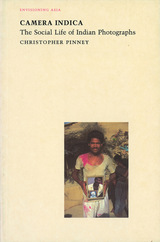
These quiet but moving images represent the changing role of photographic portraiture in India, a topic anthropologist Christopher Pinney explores in Camera Indica. Studying photographic practice in India, Pinney traces photography's various purposes and goals from colonial through postcolonial times. He identifies three key periods in Indian portraiture: the use of photography under British rule as a quantifiable instrument of measurement, the later role of portraiture in moral instruction, and the current visual popular culture and its effects on modes of picturing. Photographic culture thus becomes a mutable realm in which capturing likeness is only part of the project. Lavishly illustrated, Pinney's account of the change from depiction to invention uncovers fascinating links between these evocative images and the society and history from which they emerge.

In Photography and Anthropology, Christopher Pinney presents a provocative and readable account of the strikingly parallel histories of the two disciplines, as well as a polemical narrative and overview of the use of photography by anthropologists from the 1840s to the present. Walter Benjamin suggested that photography “make[s] the difference between technology and magic visible as a thoroughly historical variable,” and Pinney here explores photography as a divinatory practice that prompted anthropologists to capture the “primitive” lives of those they studied.
Early anthropology celebrated photography as a physical record, whose authority and permanence promised an escape from the lack of certainty in speech. But later anthropologists faulted photography for failing to capture movement and process. Anthropology as a practice of “being there” has thus found itself entwined in an intimate engagement with photography as metaphor for the collection of evidence.
Through numerous examples from the annals of anthropological photography, Photography and Anthropology examines the history of anthropology’s enchantment with photography alongside the anthropological theory of photography and documentation.
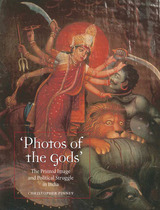
Drawing on years of archival research, interviews with artists and publishers, and the ethnographic study of their rural consumers, Christopher Pinney traces the intimate connections between the production and consumption of these images and the struggle against colonial rule. The detailed output of individual presses and artists is set against the intensification of the nationalist struggle, the constraints imposed by colonial state censorship, and fifty years of Indian independence. The reader is introduced to artists who trained within colonial art schools, others whose skills reflect their membership of traditional painting castes, and yet others who are self-taught former sign painters.
Photos of the Gods is the first comprehensive history of India’s popular visual culture. Combining anthropology, political and cultural history, and the study of aesthetic systems, and using many intriguing and unfamiliar images, the book shows that the current predicament of India cannot be understood without taking into account this complex, fascinating, and until now virtually unseen, visual history.


When the Iron Curtain fell in 1989, Eastern Europe saw a new era begin, and the widespread changes that followed extended into the world of art. Art and Democracy in Post-Communist Europe examines the art created in light of the profound political, social, economic, and cultural transformations that occurred in the former Eastern Bloc after the Cold War ended. Assessing the function of art in post-communist Europe, Piotr Piotrowski describes the changing nature of art as it went from being molded by the cultural imperatives of the communist state and a tool of political propaganda to autonomous work protesting against the ruling powers.

In this comprehensive study of the artistic culture of the region between the Iron Curtain and the former Soviet Union, Piotr Piotrowski chronicles the relationship between avant-garde art production and post–World War II politics in such Iron Curtain nations as Bulgaria, the Czech Republic, East Germany, Hungary, Poland, Romania, and the former Yugoslavia. Featuring more than two hundred images, most by artists largely unfamiliar to an English-speaking audience, In the Shadow of Yalta is a fascinating portrait of the inspiring art made in a region—and at a time—of critical importance in modern Europe.

Pittock charts Scotland’s economic, cultural, and social histories, focusing on the history and cultural impact of Scottish cities and industries, the role of multiculturalism in contemporary Scottish society, and the upheaval of devolution, including the 2007 election of Scotland’s first nationalist government. From the architecture and art of Edinburgh and Glasgow to the Scottish Parliament, the book investigates every aspect of modern Scottish society to explain the striking rise of Scottish nationalism since 1960. The Road to Independence? reveals a new perspective on modern Scottish culture, making it an invaluable read for history scholars and lovers of Scotland alike.
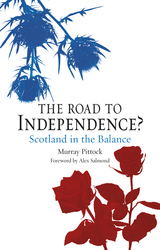
Pittock charts Scotland’s economic, cultural, and social histories, focusing on the history and cultural impact of Scottish cities and industries, the role of multiculturalism in contemporary Scottish society, and the upheaval of devolution, including the 2007 election of Scotland’s first nationalist government. From the architecture and art of Edinburgh and Glasgow to the Scottish Parliament, the book investigates every aspect of modern Scottish society to explain the striking rise of Scottish nationalism since 1960. Now brought up to date and with a new foreword by Scottish First Minister Alex Salmond, The Road to Independence? reveals a new perspective on modern Scottish culture on the eve of Scotland’s referendum on independence from the UK in September 2014.
“Enormously informative and often thought-provoking. . . . This book could hardly be improved on: it’s lively, lucid, witty, beautifully written.”—Scotsman
“A well-arranged exposition of the various pressures and stresses Scottish society has faced and faces still.”—Diplomat

Zebra is the most comprehensive and wide-ranging survey ever published of the natural and cultural history of this cherished animal, exploring its biology and cultural relevance in Africa and beyond. Few know that there are three species of zebra (plains, mountain, and Grévy's), that one of these is currently endangered, or that among the many subspecies was once found the quagga, an animal that once roamed southern Africa in large numbers before dying out in the 1880s. Drawing on a range of examples as dizzying as the zebra’s stripes, this book shows how the zebra’s history engages and intersects with subjects as diverse and rich as eighteenth-century humor, imperialism, and technologies of concealment. Including more than one hundred illustrations, many previously unpublished, Zebra offers a new perspective on this much-loved, much-depicted, but frequently misunderstood animal.
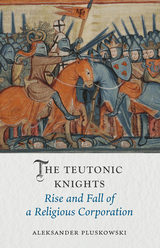
This book provides a concise and incisive introduction to the knights of the Teutonic Order, the last of the great military orders established in the twelfth century. The book traces the Order’s evolution from a crusader field hospital into a major territorial ruler in northeastern Europe. Notably, the knights constructed distinctive fortified convents, including their headquarters in Western Christendom’s largest castle. The narrative concludes with the Order’s fifteenth-century decline due to the combined effects of a devastating war with Poland-Lithuania and the Protestant Reformation. The result is an accessible overview of this pivotal corporation in European history.


This entertaining and richly illustrated book examines the history of the diamond trade through the centuries from India and Brazil to South Africa and Europe and investigates what happens to diamonds once they reach the cutters and polishers. Marcia Pointon takes the reader on a unique tour of the ways in which the quadrahedron diamond shape has inspired design, architecture, and painting, from the symbolism of medieval manuscripts to modern-day graffiti. She questions the etiquette of engagement rings, and she reminds us why and how lost, stolen, or cursed diamonds create suspense in so many classic novels and films. This compelling and fascinating account of the history of sparklers around the world will appeal to all who covet, as well as all who despise, the unparalleled brilliance and glitter of the diamond.
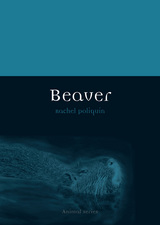
Widely hunted for their fur, beavers were a driving force behind the colonization of North America and remain, today, Canada’s national symbol. Poliquin examines depictions of beavers in Aesop’s Fables, American mythology, contemporary art, and environmental politics, and she explores the fact and fictions of beaver chain gangs, beaver-flavored ice cream, and South America’s ever-growing beaver population. And yes, she even examines the history of the sexual euphemism. Poliquin delights in the strange tales and improbable history of the beaver. Written in an accessible style for a broad readership, this beautifully illustrated book will appeal to anyone who enjoys long-forgotten animal lore and extraordinary animal biology.

“A welcome and necessary update of the life of one of the twentieth century's most provocative intellectuals.”—Dana Sawyer
A rich and lucid account of Aldous Huxley’s life and work.
Aldous Huxley was one of the twentieth century’s most prescient thinkers. This new biography is a rich and lucid account that charts the different phases of Huxley’s career: from the early satirist who depicted the glamorous despair of the postwar generation, to the committed pacifist of the 1930s, the spiritual seeker of the 1940s, the psychedelic sage of the 1950s—who affirmed the spiritual potential of mescaline and LSD—to the New Age prophet of Island. While Huxley is still best known as the author of Brave New World, Jake Poller argues that it is The Perennial Philosophy, The Doors of Perception, and Island—Huxley’s blueprint for a utopian society—that have had the most cultural impact.
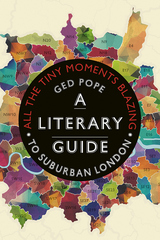
The London suburbs have, for more than two hundred and fifty years, fired the creative literary imagination: whether this is Samuel Johnson hiding away in bucolic preindustrial Streatham, Italo Svevo cheering on Charlton Athletic Football Club down at The Valley, or Angela Carter hymning the joyful “wrongness” of living south-of-the-river in Brixton. From Richmond to Rainham, Cockfosters to Croydon, this sweeping literary tour of the thirty-two London Boroughs describes how writers, from the seventeenth century on, have responded to and fictionally reimagined London’s suburbs. It introduces us to the great suburban novels, such as Hanif Kureishi’s Bromley-set The Buddha of Suburbia, Lawrence Durrell’s The Black Book, and Zadie Smith’s NW. It also reveals the lesser-known short stories, diaries, poems, local guides, travelogues, memoirs, and biographies, which together show how these communities have long been closely observed, keenly remembered, and brilliantly imagined.
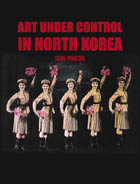
Art Under Control in North Korea is the first Western publication to explore the state-controlled role of art in North Korea. This timely volume places North Korean art in its historical, political, and social contexts, with a discussion on the state system of cultivating and promoting artists and an examination of the range of art produced, from painting and calligraphy to architecture and applied art. Portal offers an incisive analysis that compares the dictatorial control exerted over artists by North Korean leaders to that of past regimes. She also examines the ways in which archaeology has been employed for political ends to legitimize the present regime.
Art Under Control in North Korea is an intriguing and vibrant volume that explores the creation of art under totalitarian rule and the ways art can subvert a dictatorial regime.
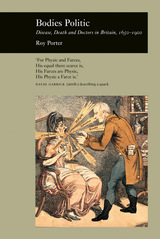
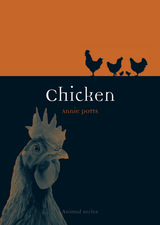

The contemporary Cool attitude is barely 50 years old, but its roots are older than that. Cool Rules traces Cool's ancient origins in European, Asian, and African cultures, its prominence in the African-American jazz scene of the 1940s, and its pivotal position within the radical subcultures of the 1950s and '60s. Pountain and Robins examine various art movements, music, cinema, and literature, moving from the dandies and flâneurs of the eighteenth and nineteenth centuries through to the expropriation of a whole cultural and psychological tradition by the media in the 1980s and '90s. What began as a rebellious posture adopted by minorities mutated to become mainstream itself. Cool is now primarily about consumption, as cynical advertisers have seized on it to create a constantly updated bricolage of styles and entertainments designed to affect the way people think about themselves and their society.

Alan Powers gives equal weight to the technical and aesthetic aspects of modernism, as well as its often controversial reception within Britain and around the world. He examines the works of key British architects and delves into the influence of non-British architects within the United Kingdom. Powers then turns his attention to postmodern architecture as a global movement, looking at contemporary efforts to make architecture sustainable and adaptable to the new challenges of urban life.
Thoroughly illustrated with images of the buildings under discussion, advertisements, and other historical photographs, Britain is an authoritative, yet highly accessible, account of twentieth-century British architecture.

Keith Pratttraverses the ancient landscapes of the Koreas, from the kingdoms of Old Choson and Wiman Choson to the present-day 38th Parallel division. The book’s engaging narrative details the wars, ruling dynasties, Chinese and Japanese imperialism, and controversial historical events such as the abuses of the Japanese occupation.
Everlasting Flower applies an equally careful eye to religious practices, dress, and food, and augments the narrative with richly illustrated pictorial essays. As the Korean peninsula assumes a prominent role in world affairs, Everlasting Flower offers an invaluable survey of Korean history and culture.

Günter Grass is the first biography in English of this Nobel Prize–winning writer. Julian Preece introduces both Grass’s key works and political activities, chronicling his interaction with major figures from literary and public life like holocaust poet Paul Celan, Chancellor Helmut Kohl, and cofounder of the Red Army Faction Ulrike Meinhof. From Grass’s campaigning as a citizen for the anti-Nazi resistor and Social Democrat leader Willy Brandt to his more recent invectives against free-market capitalism, Preece places Grass’s fiction and public work in the context of Cold War European politics and post-unification Germany, painting an indelible portrait of a writer who reinvented the postwar German novel and redefined the role of literary commitment.
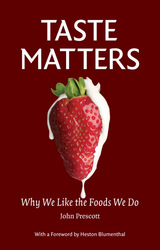
The human tongue has somewhere up to eight thousand taste buds to inform us when something is sweet, salty, sour, or bitter—or as we usually think of it—delicious or revolting. Tastes differ from one region to the next, and no two people’s seem to be the same. But why is it that some people think maple syrup is too sweet, while others can’t get enough? What makes certain people love Roquefort cheese and others think it smells like feet? Why do some people think cilantro tastes like soap?
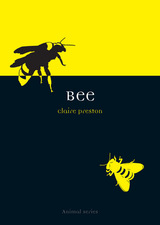
Bee traces the bee's role in art, politics, and social thought, drawing on scientific studies, literature, and historical texts. The volume examines the evolution of the bee's cultural image from a symbol of virtue and civility to the dangerous swarms of killer bees in Hollywood horror flicks. From ancient political analogies to Renaissance debates about monarchy to studies of bee behavior that portend ominous conclusions for our own socialization and use of technology, Bee analyzes the complex connections between the bee and human culture.
Written with energy and enthusiasm, Bee offers an original and fascinating meditation on this tiny workaholic.
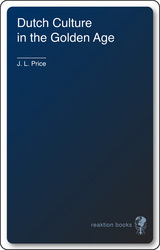
The seventeenth century is considered the Dutch Golden Age, a time when the Dutch were at the forefront of social change, economics, the sciences, and art. In Dutch Culture in the Golden Age, eminent historian J. L. Price goes beyond the standard descriptions of the cultural achievements of the Dutch during this time by placing these many achievements within their social context. Price’s central argument is that alongside the innovative tendencies in Dutch society and culture there were powerful conservative and reactionary forces at work—and that it was the tension between these contradictory impulses that gave the period its unique and powerful dynamic.
Dutch Culture in the Golden Age is distinctive in its broad scope, examing art, literature, religion, political ideology, theology, and scientific and intellectual trends, while also attending to the high and popular culture of the times. Price’s new interpretation of Dutch history places an emphasis on the paradox of the Dutch resistance to change as well as their general acceptance of innovation.
This comprehensive look at the Dutch Golden Age provides a fascinating new way to understand Dutch culture at the height of its historic and global influence.

Indeed scorpions are older than dinosaurs. An ancient arthropod, their form—notable for its pair of pincers and an elegant tail that holds a menacing stinger high in the air in a permanent striking position—hasn’t changed since prehistoric times, though today there are some 1700 different species. Throughout our existence scorpions have served as a powerful cultural and religious symbol—sometimes dangerous, sometimes protecting—from the Egyptian goddess Serket to Zodiac astrology to folk medicine. A fascinating tour that takes us from the art of North Africa to the American Civil War to the markets of Beijing, Scorpion is an homage to one of earth’s oldest residents.


By turns creative and destructive, wind spreads seeds, fills sails, and disperses the energy of the sun. Worshipped since antiquity, wind has molded planets, determined battles, and shaped the evolution of life on earth—yet this invisible element remains intangible and unpredictable. In this book, Louise M. Pryke explores wind’s natural history as well as its cultural life in myth, religion, art, and literature. Beyond these ancient imaginings, Pryke also traces how wind inspired modern scientific innovations and appeared in artistic works as diverse as the art of Van Gogh, the poetry of Keats, and the blockbuster film.

Estonia, Latvia, and Lithuania are often grouped together as the Baltic States, but these three Eastern European countries, tied together historically, are quite different. Although each is struggling to find its place within Europe and fighting to preserve its own identity, the idea of the Baltic States is a façade. In this book, Aldis Purs dispels the myth of a single, coherent Baltic identity, presenting a radical new view of the region.
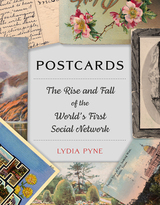
Postcards are usually associated with banal holiday pleasantries, but they are made possible by sophisticated industries and institutions, from printers to postal services. When they were invented, postcards established what is now taken for granted in modern times: the ability to send and receive messages around the world easily and inexpensively. Fundamentally they are about creating personal connections—links between people, places, and beliefs. Lydia Pyne examines postcards on a global scale, to understand them as artifacts that are at the intersection of history, science, technology, art, and culture. In doing so, she shows how postcards were the first global social network and also, here in the twenty-first century, how postcards are not yet extinct.

READERS
Browse our collection.
PUBLISHERS
See BiblioVault's publisher services.
STUDENT SERVICES
Files for college accessibility offices.
UChicago Accessibility Resources
home | accessibility | search | about | contact us
BiblioVault ® 2001 - 2024
The University of Chicago Press









